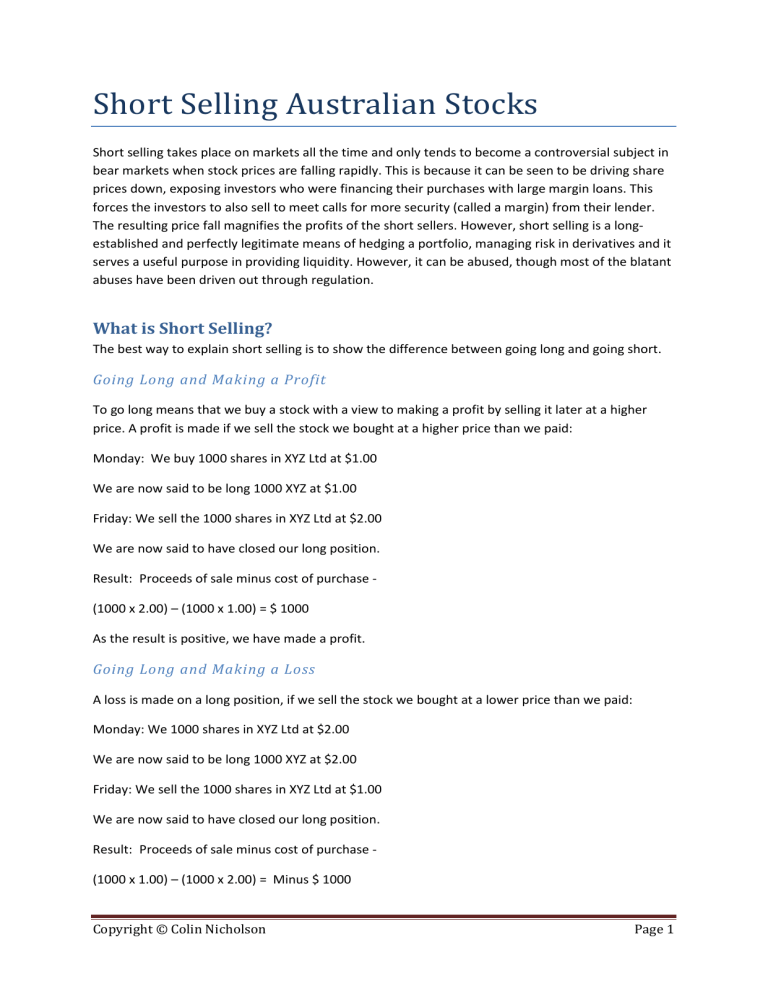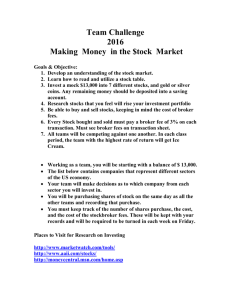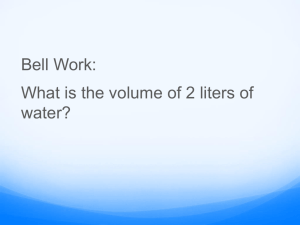Short Selling Australian Stocks

Short Selling Australian Stocks
Short selling takes place on markets all the time and only tends to become a controversial subject in bear markets when stock prices are falling rapidly. This is because it can be seen to be driving share prices down, exposing investors who were financing their purchases with large margin loans. This forces the investors to also sell to meet calls for more security (called a margin) from their lender.
The resulting price fall magnifies the profits of the short sellers. However, short selling is a longestablished and perfectly legitimate means of hedging a portfolio, managing risk in derivatives and it serves a useful purpose in providing liquidity. However, it can be abused, though most of the blatant abuses have been driven out through regulation.
What is Short Selling?
The best way to explain short selling is to show the difference between going long and going short.
Going Long and Making a Profit
To go long means that we buy a stock with a view to making a profit by selling it later at a higher price. A profit is made if we sell the stock we bought at a higher price than we paid:
Monday: We buy 1000 shares in XYZ Ltd at $1.00
We are now said to be long 1000 XYZ at $1.00
Friday: We sell the 1000 shares in XYZ Ltd at $2.00
We are now said to have closed our long position.
Result: Proceeds of sale minus cost of purchase -
(1000 x 2.00) – (1000 x 1.00) = $ 1000
As the result is positive, we have made a profit.
Going Long and Making a Loss
A loss is made on a long position, if we sell the stock we bought at a lower price than we paid:
Monday: We 1000 shares in XYZ Ltd at $2.00
We are now said to be long 1000 XYZ at $2.00
Friday: We sell the 1000 shares in XYZ Ltd at $1.00
We are now said to have closed our long position.
Result: Proceeds of sale minus cost of purchase -
(1000 x 1.00) – (1000 x 2.00) = Minus $ 1000
Copyright © Colin Nicholson Page 1
As the result is negative, we have made a loss.
Going Short and Making a Profit
To go short means that we sell a stock with a view to making a profit by later buying it at a lower price. A profit is made if we buy the stock we sold at a lower price than we sold for:
Monday: We sell 1000 shares in XYZ Ltd at $2.00
We are now said to be short 1000 XYZ at $2.00
Note: Because we did not own what we sold, we have borrowed the stock from a shareholder to deliver to the purchaser.
Friday: We buy 1000 shares in XYZ Ltd at $1.00
We are now said to have closed our short position.
We now repay the shares that we borrowed on Monday.
Result: Proceeds of sale minus cost of purchase
(1000 x 2.00) – (1000 x 1.00) = $ 1000
As the result is positive, we have made a profit.
Going Short and Making a Loss
A loss is made on a short position, if you we buy a stock we sold at a higher price than we sold them for.
Monday: We sell 1000 shares in XYZ Ltd at $1.00
We are now said to be short 1000 XYZ at $1.00
Friday: We buy 1000 shares in XYZ Ltd at $2.00
We are now said to have closed our short position.
Result: Proceeds of sale minus cost of purchase
(1000 x 1.00) – (1000 x 2.00) = Minus $ 1000
As the result is negative, we have made a loss.
Derivative Markets
In futures markets it is not necessary to borrow stock, because we are always trading a contract. If we buy a contract to take delivery of an asset on a future date, we are long (just like signing a contract to buy a car for delivery next week). If we sell a contract to make delivery of an asset on a future date, then we are short (just like signing a contract to sell our house for settlement in six weeks’ time). We reap our profit or loss by selling the contract we bought or buying back the contract we sold.
Copyright © Colin Nicholson Page 2
The process in option and warrant markets is similar.
Call options and call warrants are contracts giving the owner the option, but not the obligation, to buy shares before a specified date for a specified price. They will generally rise in value if the price of the underlying shares rises.
Put options and put warrants are contracts giving the owner the option, but not the obligation, to sell shares before a specified date for a specified price. They will generally rise in value if the price of the underlying shares falls. They can therefore be used for shorting the underlying shares, or hedging a position held in the underlying shares.
It is also possible to short financial securities using contracts for difference (CFDs).
This article only deals with short selling stocks, so I have not gone into the many technical considerations in trading other financial securities.
Can Private Investors/Traders Sell Stocks short?
There is a common misconception that private investors cannot short sell shares in the Australian market. This may have come about because some brokers are reluctant to give private investors information about short selling. There are much higher costs in short selling, including borrowing the stock and setting up a margin account as described below, so brokers may be reluctant to handle the additional procedures for small account. If a broker knows that a private investor/trader does not have a sufficiently large account to be able to short sell as sufficiently large parcel of shares to make it economic, the easy answer to them by some brokers may be that short selling is not possible (not stated: for them).
Just as likely, these brokers may see themselves as trying to protect investors from themselves. This springs from the logical idea that, if you go long, your potential loss is limited, while your potential profit is unlimited. However, if you go short, your potential loss is unlimited, while your potential profit is limited.
This logical idea is true in theory:
• In a long trade, the worst that can happen is that you lose 100% of your capital. However there is unlimited profit opportunity, because there is no theoretical limit to how high prices can go.
• In a short trade, the best that can happen is that price falls to one tick, so you make 100% on your capital (assuming no leverage). However, there is no limit to your potential losses, because there is no theoretical limit to how high prices can go.
Indeed, the history of financial markets is littered with stories of famous “short squeezes”, where short sellers found that all of the remaining stock was held by a “corner”. Alternatively, the short seller found that they had shorted more stock than was issued. In these situations, there is no practical limit to the price that can be demanded by a holder from short sellers desperate to close their positions. However, as will be shown below, the rules for short selling on the ASX make it very difficult to establish a “corner” and for all practical purposes, such a possibility can be discounted.
Copyright © Colin Nicholson Page 3
A very real danger with short selling stocks though is a takeover – the loss may be large because the price has moved a long way instantly on the market to around the takeover offer price, with no opportunity to sell before that happens.
Nevertheless, short selling has features that make it more risky than trading from the long side. This article is not written to encourage anyone to short sell stocks. It is simply to inform readers, who might otherwise not be aware that short selling is a factor in the Australian stock market. Readers who have a sufficiently large account wishing to short sell shares should seek advice from their broker and/or financial adviser. If readers account is small, it may be best to short using CFDs, but there are severe risks here, so seek advice before going down that path.
Naked and Covered Short Selling
There used to be two ways to short sell Australian stocks.
The first was naked short selling, where a trader sold a stock without owning it and bought it back on the same day so that settlement could take place in T+3 for both sides of the short sale. This was called naked short selling, because the seller did not own the shares sold short. Naked short selling has now been banned.
The second is covered short selling, where a trader first borrows the shares that are to be sold short.
Covered short selling is what is described in this article. It is allowed subject to the conditions described below.
Which Stocks may be Sold Short?
Not all stocks may be sold short. This is part of the ASX protection against corners. Moreover, the list is changed by the ASX quite regularly. The basic guidelines are:
• The stock must have a sufficient number of shares available for trading.
• The stock must have a sufficient market capitalisation
• The ASX must be satisfied with the level of liquidity. This is a somewhat technical subject to do with “free float”, which is a consideration of how many shares are actually free for trading because large long-term holders (often founders) hold shares that are never traded.
If a stock meets these guidelines, it will most likely be on the ASX Approved Security List. As the list changes all the time, there is no point listing the stocks here. However, any broker should be able to provide an up to date list.
Limits on Short Selling
There are restrictions on how many shares may be sold short. A short sale of an Approved Security may not be made if the sale would have the effect of causing more than a certain percentage of the issued number of shares to be sold short. This, combined with the guidelines described above, is the major way in which the abuses of the past can be avoided.
Copyright © Colin Nicholson Page 4
There is one other important limitation on executing a short sale. That is the ASX requirement that a short sale not be made at a price lower than the price at which the last sale took place. This is designed to prevent short sellers driving the price down. It can make it difficult to do a short sale in a weak market.
Procedures and Requirements for Short Selling
Firstly, the short seller must inform the broker in advance that the order is to sell short. The broker then has the responsibility to ensure that the stock is on the Approved Security list and that the number of shares is within the 10% limit. When the deal is executed, the sale is flagged to the market as a short sale with the parameter “S”. It is also shown on the contract note as a short sale.
Secondly, the broker must secure from the short seller a margin of 20% or more of the value of the short sale, which is held in trust until the short sale is covered by repurchasing the shares. The margin may be in the form of cash or listed securities. In the case of securities, they are counted at up to 90% of their market value, the actual discount being at the discretion of the broker. Should the price of the shares sold short rise by 10%, the broker will require additional cash or up to 90% of the value of securities to be lodged to bring the margin back to 20%. Similarly, if the value of the securities lodged as margin falls, additional margin will be required. The broker also has the power to at any time call for margin to the extent of the entire cost of covering the short position. If this call is not met promptly, the broker has the power to cover the position on your behalf.
Thirdly, the broker and the short seller have a responsibility to deliver scrip on the T+3 rules. This is done by borrowing stock, naturally at a cost. This process carries a risk and is costly to monitor and maintain, so additional fees may be charged by the broker. Generally, the short seller is also required to pay the lender any dividends and the lender may also be entitled to any attaching franking credits, which, if the short seller cannot supply, must be settled in cash in addition to the amount of the dividend. The cost of borrowing scrip can, of course, be offset by the income from placing the up to 80% of capital not required as margin on the money market.
Most brokers will also require the short seller to sign a “Risk Disclosure” agreement similar to that required by the Australian Options Market.
Conclusion
It is possible to short sell Australian shares and it happens all the time. The advantage may lie in the fact that markets generally fall much more quickly than they rise. However, the process is more complicated than taking a long position and does involve greater risk.
Copyright © Colin Nicholson Page 5




